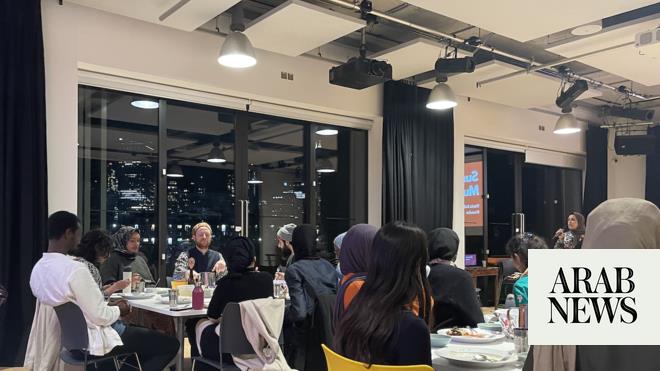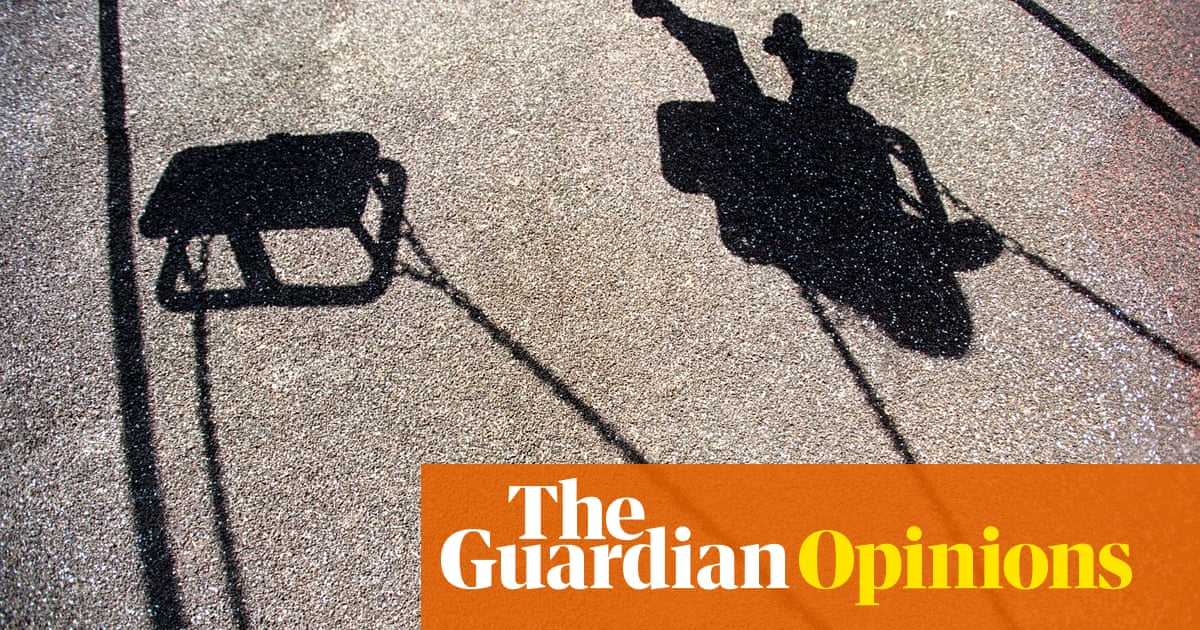
Like many families, we’ve discussed the environmental and animal-welfare impact of the meat we eat and resolved we should do better. I wouldn’t say we are massive meat-eaters – especially since cookbooks by the Guardian’s own Anna Jones and Meera Sodha entered our lives. But a packet of minced beef, a few chicken thighs and some sausages or bacon often make it into our supermarket trolley, because, frankly, they’re things everyone in our family will eat.
Also, having been raised an omnivore, my default recipes when feeling tired or uninspired are still chilli con carne, spaghetti bolognese, or something that involves chunks of chicken.
I am not alone: according to an annual survey of UK dietary trends by finder.com, 14% of British adults are now vegetarian, and a further 12% said they intended to become vegetarian, vegan or pescatarian during 2021. Yet, of those who made a similar resolution in early 2020, only 9% managed to stick to their new diet.
So, could an app based on similar psychological principles to those employed by weight-loss apps such as Noom bolster our resolve?
The Optimise Meat Tracker (standing for Online Programme to Tackle Individuals Meat Intake through Self-regulation) is a nine-week programme designed by researchers at the University of Oxford’s Livestock, Environment and People (Leap) initiative. The idea is to test whether behavioural interventions that have previously proved effective in helping people to lose weight could also help people to reduce the amount of meat they consume, both to benefit their health and that of the planet.
Launched in June, it invites participants to log on via their computer each morning and record how much meat they ate the previous day, as well as select a goal for the coming 24 hours from a list of options, such as “try a meat-free alternative”, “double the veg – halve the meat” or “make your lunch and dinner vegetarian”.
Participants are also asked to take a moment to think through when and how they are going to perform this action, what might make this difficult, and what they could do to overcome these problems.
“There’s evidence that people tend to lose track of how much meat they consume, and also underestimate it. So prompting individuals to monitor their meat consumption has also been shown to be quite effective to help people reduce their intake,” said Dr Cristina Stewart, a nutritionist and health behaviour researcher at Leap, who helped to design the programme.
People’s existing eating habits can be another barrier, even if they strongly intend to reduce their intake: “One way to overcome that intention-behaviour gap is to try and break up people’s current meat eating habits, and then encourage them to experiment with meat-free alternatives and other strategies, to try and build new eating habits,” said Stewart.
“Previous studies have also shown that if people plan how to achieve a specific goal, such as reducing their meat consumption, they’re more effective at bridging that intention-behaviour gap when they’re faced with an obstacle.”
Finally, because people often underestimate the impact of their meat consumption on their health and the environment, at the end of each week they receive feedback, in the form of a colourful page of graphics informing them just how many fewer kilograms of greenhouse gases they would produce each year, and by what percentage their risk of dying from cancer or cardiovascular disease would decrease, if the average person continued this pattern of meat consumption.
Having previously tried keeping a food diary to lose weight, I was dubious about the potential time commitment associated with logging my daily meat intake. However, Optimise only asks participants to log the number of portions of red meat, poultry, fish or seafood they consumed, which I soon discovered takes no more than a minute. I quickly became aware of the snacky nature of my meat and fish consumption – a blob of tuna mayonnaise here, a scattering of leftover chicken pieces there – and just how quickly it adds up.
Previously, I’d felt quite smug about how little meat I ate, but during that first week I discovered that I had consumed an average of 73g of meat or fish a day – equivalent to roughly 1.5 pork sausages or half a tin of tuna.
If I continued eating like this for a full year, my meat consumption would be linked to approximately 1,094 kg of greenhouse gases – the same as driving a regular petrol car 2,793 miles, or heating an average UK home for 173 days. I also learned that across the whole year, my level of meat consumption would require as much water as 2,351 showers and would require the use of land equivalent to one tennis court.
My saving grace was that I consumed no red meat (I mostly eat chicken, fish and seafood), meaning the impact on my personal health was minimal. And yes, I know industrial chicken production is cruel, and some fish farming has negative environmental consequences, but I do try to buy free range and wild-caught where possible, and no, I’m definitely not perfect.
Even so, I resolved to do better and set myself the initial goal of reducing my weekly meat consumption by 50% over the next month. Achieving that would mean getting the rest of the family on board, including our meat-loving eight-year-old son. So we sat down with the kids and asked what they thought about the idea of giving up meat.
Surprisingly, they were up for the challenge: they, too, were concerned about the impact of meat consumption on the environment and animal cruelty, but felt conflicted because they really enjoyed the taste of meat. As a starting point, we agreed that we would allow ourselves one meaty day a week (though that meat would have to be ethically sourced), and we could still consume some fish or shellfish during the week.
We would try this for a month or two, and if that went well – and we could find some new vegetarian recipes that were not too lemony, too sumac-y, or too spicy for the children’s taste – we could consider reducing our meat and fish consumption even further.
Prompted by the app, I visited my local Co-op and tried out some meat-free burgers on the kids, who rated them just as tasty as beef burgers: high praise, given one of our son’s favourite foods is a cheese burger. Emboldened, I ordered a copy of David Frenkiel and Luise Vindahl’s Little Green Kitchen family cookbook, handed it to the kids and asked them to pick three new vegetarian recipes to try out.
Having noticed from my food diary that I often consumed leftover scraps of meat or tuna to avoid them going to waste, I became more mindful about portion sizes when we did cook meat or fish, so there were no leftovers.
During our food shops, I deliberately avoided putting any of the frankfurters or wafer-thin chicken that I habitually relied on for quick school packed lunches or kids’ dinners, and stocked up on Quorn, mozzarella and hummus instead. Not having these meaty staples in the fridge made a massive difference, and forced me to become more creative about the children’s lunch boxes – rice ball “onigiri”, boiled eggs, hummus with pitta, and toasted avocado and mozzarella sandwiches are now weekly lunches the kids actually look forward to. They are also healthier than what we were feeding them before.
The feedback provided by the Optimise app was also encouraging. During weeks two and three, I reduced my personal meat consumption by 40g a day on average, which is more than half. If I continued like this for a full year, I would make the equivalent greenhouse gas savings as driving my car 1,696 fewer miles and save as much water as 1,371 showers – more than I’d take in approximately four years.
And continue I will. Because I’ve learned that reducing the amount of meat I eat is not all that difficult. And in fact, the more I explore meat-free alternatives, and the bigger my repertoire of delicious vegetarian recipes grows, the easier it becomes for all of us. But breaking old habits, and being pushed to try something new, is a crucial first step.
Food diary
Week one:
Day 1: 1 serving (89g) non-breaded chicken (jerk chicken breast); 1 serving (72g) canned tuna
Day 2: 1 serving (72g) canned tuna; 1 serving (129g) non-breaded oily fish (salmon fillet)
Day 3: 0.5 serving (36g) canned tuna
Day 4: 1 serving low meat (<25%) mixed dish (chicken and vegetable curry)
Day 5: No meat or fish
Day 6: 2 servings (118g total) small shellfish (moules mariniere)
Day 7: No meat
Typical week on Optimise programme
Day 1: No meat
Day 2: 1 serving (58g) small shellfish (orzo with prawns and feta)
Day 3: No meat
Day 4: No meat
Day 5: No meat
Day 6: 1 serving moderate fish (25-40%) mixed dish (fish and vegetable curry)
Day 7: 1 serving (127g) roast pork












